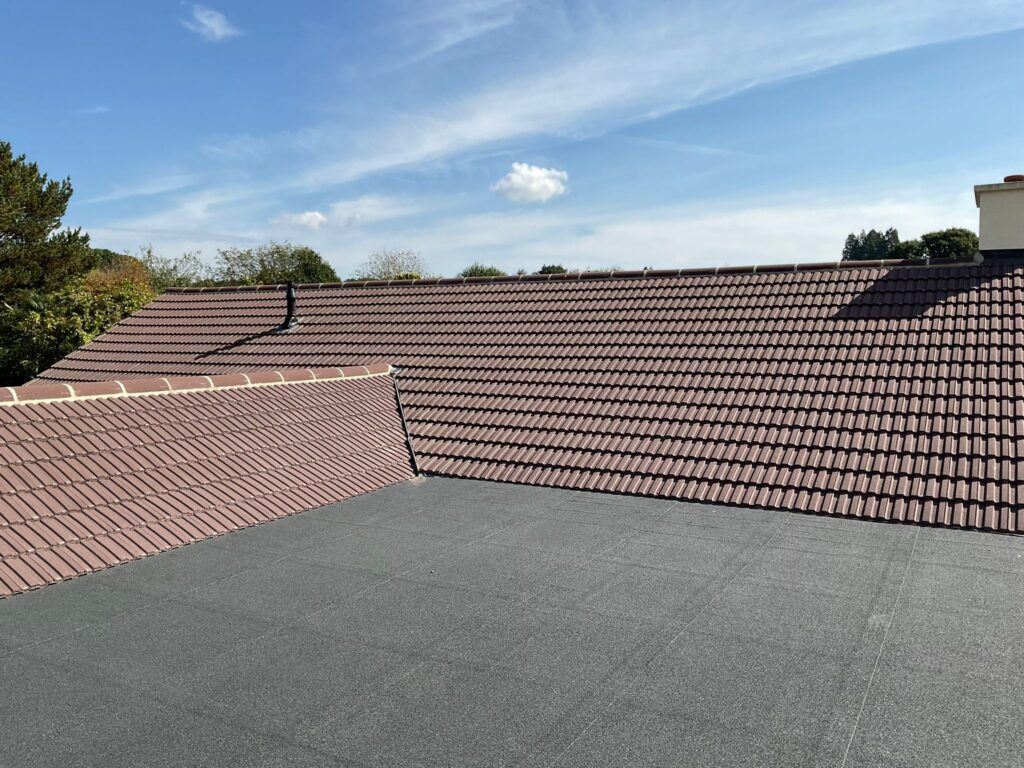When you look at your roof, what you see are the surface materials—often tiles or slates—but there’s much more going on beneath. Understanding the different layers of your roof can help you spot issues early, appreciate the value of regular maintenance, and make informed decisions when repairs or upgrades are needed.
The Visible Layer: Roof Tiles
The topmost layer of your roof is what most people associate with protection—and for good reason. Roof tiles, whether clay, slate, or concrete, are your first defence against the elements. They’re designed to shed water, resist wind, and offer a degree of insulation.
However, tiles alone don’t make your roof watertight. They are part of a broader roofing system that works together to provide long-term protection for your home.
The Underlayment: Your Roof’s Hidden Hero
Beneath the tiles lies the underlayment—a critical waterproof membrane that acts as a second line of defence. It prevents moisture from penetrating into the roof structure should any tiles break, shift, or become damaged.
There are typically two types of underlayment used in UK roofing:
- Felt underlay (bituminous) – Traditional and still used in many applications.
- Breathable membrane – A modern alternative that allows trapped moisture to escape while keeping water out.
At LS Roofing Tring, we always assess whether your existing underlayment is fit for purpose before recommending any repairs or replacement.
Battens: Supporting the Tiles
Roof battens are thin strips of timber fixed horizontally across the rafters. They support the tiles and ensure they are evenly spaced. Correctly installed battens help to maintain proper water run-off and tile alignment, which is essential for longevity and weather resistance.
Ventilation: Preventing Moisture Build-up
Proper ventilation is often overlooked but is essential to prevent condensation in the roof space. Ventilation systems—such as ridge vents, soffit vents, or breathable membranes—help to regulate airflow, reducing the risk of damp, mould, and timber decay.
Insulation and Roof Deck
Further down the system, the insulation keeps your home warm and energy-efficient. Below that is the roof deck—typically timber sheathing—which provides structural support. Any deterioration at this level can compromise the integrity of the entire roofing system, making professional inspections vital.
Why Understanding Matters
Knowing what lies beneath your roof tiles allows you to:
- Recognise early warning signs such as slipped tiles or water ingress
- Ask the right questions when speaking to roofing professionals
- Invest in proactive maintenance, which is more cost-effective than emergency repairs
A roof is more than just its surface. Each component plays a role, and failure in one area can lead to problems in another. That’s why, at LS Roofing Tring, we take a comprehensive approach to roof assessments and repairs—looking at every layer to ensure the entire system is sound.
Conclusion
Understanding your roof’s structure—from the tiles down to the deck—is essential for keeping your home protected and energy-efficient. If you’re unsure about the current state of your roof or have noticed issues such as damp patches, broken tiles, or leaks, our team at LS Roofing Tring is here to help. We offer thorough inspections and expert advice to ensure your roof remains in excellent condition for years to come. Contact us today to arrange a consultation.
Call us on: 01442 504 695
Click here to find out more about LS Roofing Tring
Click here to complete our contact form and see how we can help with your roofing needs.

